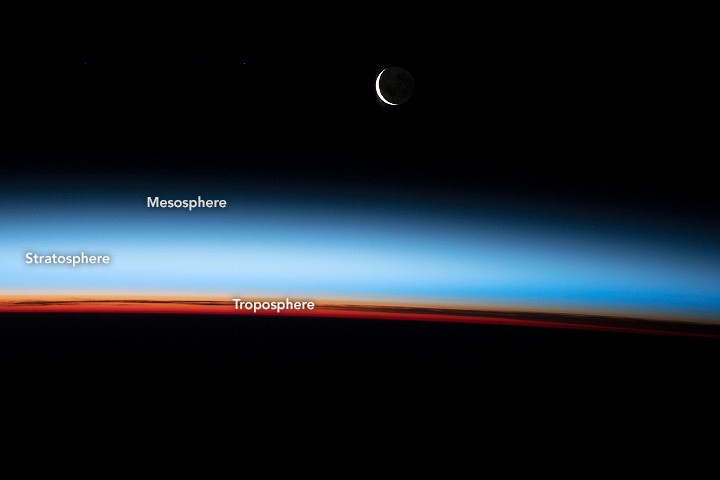A stunning photo of the "crescent moon" was just released by National Aeronautics and Space Administration (NASA) astronauts from International Space Station.
NASA said per Recently Heard that the shot was taken on September 30, 2022, while the ISS was circling 267 miles (429 km) over the Atlantic Ocean southwest of South Africa during an orbital sunrise.
NASA Astronaut Captures Stunning Photo of Cresent Moon From ISS
The crescent moon and a beautiful series of hues that represent approximately different levels of the atmosphere are both present in the image.
The upper quarter of the picture is made up entirely of the darkness of space, with the crescent Moon in its center.
In the sliver illuminated by the sun, subtle characteristics of the lunar craters may be observed.
The darkness below the Moon gradually gives way to the Earth's atmosphere, which first appears deep blue, then white, then orange, and finally returns to black on Earth's surface.

ALSO READ : International Space Station Swerves to Move Out of the Predicted Path of Russian Space Debris
According to NASA, this side view of Earth allows us to see the layers of our vibrant atmosphere. Below and above the black side of the Earth's surface lies the troposphere (orange).
The white stratosphere, which is 22 miles (35 km) thick, is above, the US space agency further stated in its Instagram post. It has the ozone layer, which shields humans from dangerous ultraviolet (UV) radiation.
The mesosphere's pale blue and beyond gradually turn black as space.
Other Photos of the Crescent Moon from NASA's ISS Perspective
Another image of the Earth's horizon, commonly known as the Earth's limb, and a cross-section of atmospheric layers was taken by an astronaut aboard ISS last December 2021.
In a separate blog post, NASA said that the ISS was situated above the southwest Pacific Ocean, around 1100 kilometers (700 miles) east of New Zealand, with a waxing crescent moon overhead.
Due to scattering by dust, smoke, and smog particles, the troposphere, the lowest layer of the atmosphere, exhibits orange and red colors. Since practically all cloud and weather processes function there, it is frequently referred to as the "weather layer."
In the image, clouds may be seen as black streaks, especially on the right side. Most life on Earth is supported by the troposphere, which is 15 kilometers (10 miles) thick. Researchers and astronauts utilize its distinctive top surface and recognizable "warm" hues as visual indications of this layer.
The stratosphere is located just above the troposphere but is less dense. This blue layer rises to 50 kilometers (30 miles) above the surface of the Earth and is often cloud-free. The mesosphere is the area just above the stratosphere.
RELATED ARTICLE : NASA Probe Shares Footage of Two 'Kreutz Sungrazers" Comets Heading Towards the Sun [Look]
Check out more news and information on Space in Science Times.












